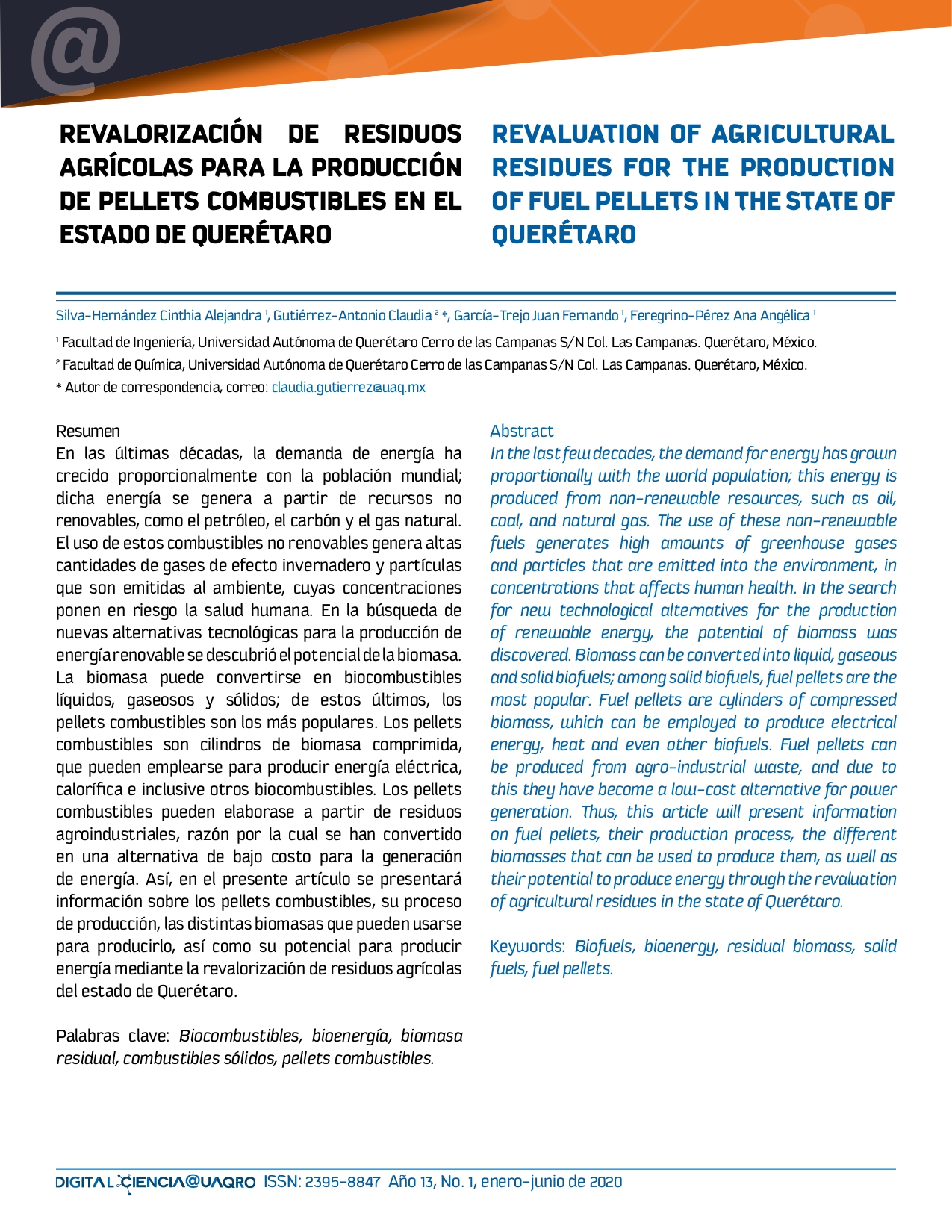Abstract
In the last few decades, the demand for energy has grown proportionally with the world population; this energy is produced from non-renewable resources, such as oil, coal, and natural gas. The use of these non-renewable fuels generates high amounts of greenhouse gases and particles that are emitted into the environment, in concentrations that affects human health. In the search for new technological alternatives for the production of renewable energy, the potential of biomass was discovered. Biomass can be converted into liquid, gaseous and solid biofuels; among solid biofuels, fuel pellets are the most popular. Fuel pellets are cylinders of compressed biomass, which can be employed to produce electrical energy, heat and even other biofuels. Fuel pellets can be produced from agro-industrial waste, and due to this they have become a low-cost alternative for power generation. Thus, this article will present information on fuel pellets, their production process, the different biomasses that can be used to produce them, as well as their potential to produce energy through the revaluation of agricultural residues in the state of Querétaro

This work is licensed under a Creative Commons Attribution-NonCommercial 4.0 International License.

